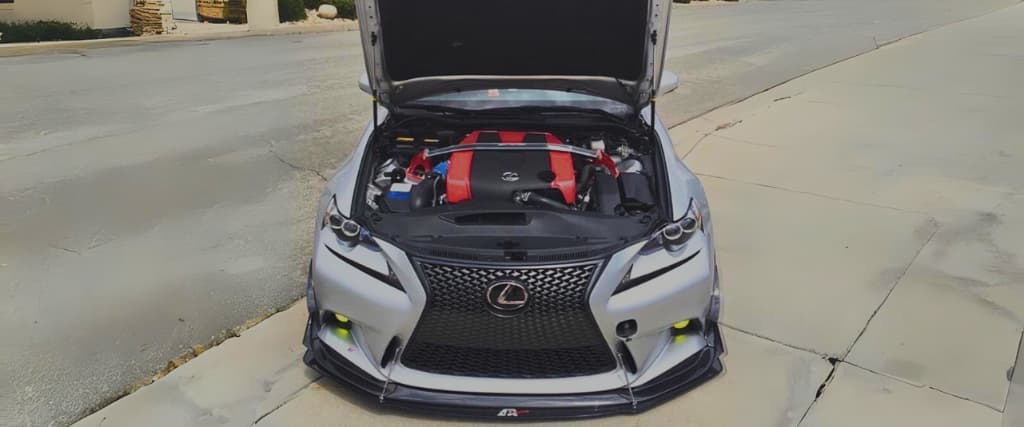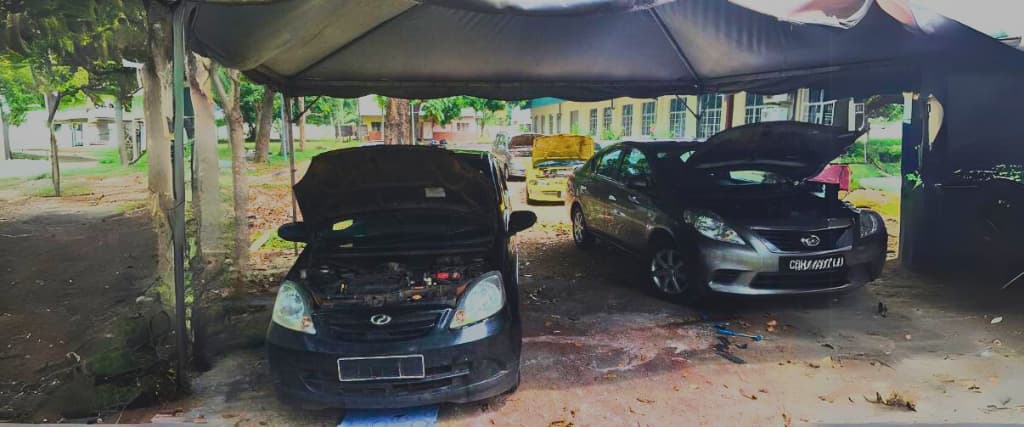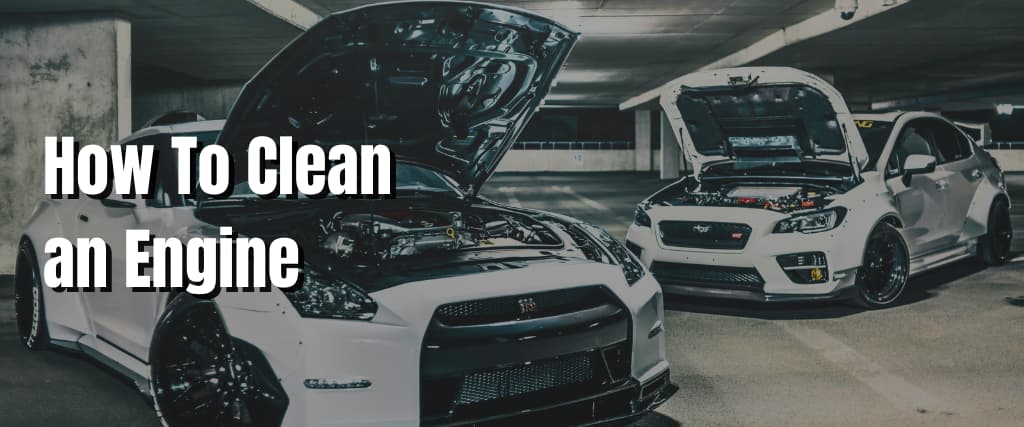Taking care of your vehicle means making sure it’s regularly cleaned. Doing so prevents corrosion and keeps the inside looking good. However, one area of the car that sometimes gets looked over when cleaning is the engine.
Some people are afraid to lift the hood and remove dirt and debris from the engine. But if you want your car running well and free from harmful dirt, knowing how to clean an engine is crucial.
This post will cover everything you need to know about how to clean an engine, including what to watch out for, which supplies to use, and how to go through the steps in detail. That way, you can ensure your car’s engine stays nice and shiny.
Preparation: How To Clean an Engine

Cleaning the outside of your vehicle requires little preparation. You drive to the car wash or place you want to wash your car and start spraying.
But things are a little different when figuring out how to clean an engine.
First, you want to avoid cleaning a hot engine. The mixture of cold water and hot metal parts is not ideal. So allow your car to rest for about 10 to 15 minutes before attempting to clean the engine.
Second, some cars have large plastic shields covering large engine areas. It’s great to keep dirt off and makes the engine bay look great, but it can prevent access which is essential for cleaning the engine. Take a moment to remove any large plastic covers, usually held on by just a few easily-accessible bolts.
Finally, some parts under the hood of your car don’t do well with excessive water or detergents. This includes electrical connections and air intake components. Cover those areas with plastic or aluminum foil to protect them during the process.
Now that you’ve prepared the area, let’s move forward with how to clean an engine.
Removing Large Debris and Grease
Don’t go for the hose quite yet. Before beginning to spray with water, it’s best to take care of a couple of things first.
The engine bay of many vehicles can tend to collect things. Leaves, pine needles, and other debris can enter the engine bay. Put on gloves and remove all the big pieces of debris you can.
Once that’s taken care of, it’s time to bring out the degreaser. Since engines have oil and other lubricants, greasy deposits can build up over time.
You’ll want to spray those down with a heavy-duty degreaser and scrub the deposits before going to the next step. Don’t forget to do any plastic shields you removed too.
At this point, your engine should have the electrical components protected, be free of major debris, and be pretreated with a degreaser. If that’s the case, you’re ready for the next step.
Washing the Engine

With all the fun prep work out of the way, it’s finally time to bring out the hose or power washer.
You might have washed the outside of your vehicle before, but cleaning the engine is a little different.
First, you should have already used the degreaser on anything that needs serious attention. Since that helps take off deposits, you should not need to use additional soap. Doing so can leave a soapy residue where you don’t want it to be.
So leave the excess soap for the exterior of your car.
Also, you don’t want to use too high of a power wash for the engine bay. There are delicate parts that are not designed to be blasted with high-pressure water. A hose provides more than enough power.
If you’re using a pressure washer, see if it has an adjustable setting and lower it. At self-service car washes, you can usually use a different setting, such as the final rinse, to reduce the pressure. When using a power washer at home, check for pressure adjustments.
If your power washer does not have an adjustable pressure setting, position the nozzle far away from surfaces. This additional space will reduce the pressure, protecting the contents of your engine bay.
And now, it’s finally time to spray down the engine bay.
Take your time and do your best to avoid the electrical connections and air intake areas. Thoroughly rinse off any area where degreaser was applied, and make sure it gets removed from the engine bay, not stuck in lower areas.
Continue rinsing the engine bay until you have removed all the degreaser and dirt you can.
If you regularly clean your engine bay, this won’t take long. If it’s been some time and there is significant build-up, don’t overdo it.
Instead of trying to get it into perfect shape, create a habit of cleaning the engine regularly. The hard-to-remove deposits will eventually clean out.
Drying the Engine

The last step is to dry the engine bay. Once again, this requires a different technique than the exterior.
Instead of reaching for the nice dry towels, it’s ideal to first dry the engine bay with compressed air. Spray down the areas where water collects, while doing your best to avoid using too high of pressure too close to delicate components.
Once you’ve air-dried all that you can, bring out the dirty rags for the last step. You don’t want to use the same towels to dry the exterior. The engine bay’s oil and grease might stain the dry rags, so using older rags works just fine.
Once nice and dry, you can add some engine bay protectant to specific parts that might need it, especially plastic and rubber components.
Then replace any covers you took off, and you’re ready to hit the road.
How To Clean an Engine: Wrap Up
Now you have everything you need to know about how to clean an engine. Start by carefully preparing the area by allowing the car to cool, removing covers, and protecting electrical connections.
Then take a moment to remove large debris and degrease the heavy deposits before gently but thoroughly spraying down the engine bay with water. Blow it dry with compressed air, then use rags to dry completely before adding any engine bay protectants.


